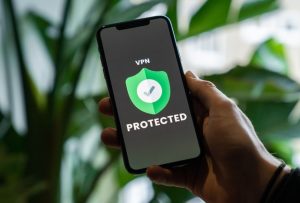With the rise of social media, online gaming, and streaming services, it’s important for parents to be aware of the dangers that exist online and know how to protect their children. According to Common Sense Media research, there has been a 17% increase in social media usage among kids over the past year. A study also shows that kids are spending more time online than ever before. Parental controls are an important tool for keeping kids safe and promoting responsible online behavior.
Parental Controls can help protect children from cyberbullying, invasion of privacy, financial or identity theft, exposure to predators and other cyber threats. Parents can begin enforcing online safety rules by using the parental control settings found on digital devices such as computers and smartphones. For example, they can set limits on how much time their child spends on certain websites or apps or block access altogether if necessary.
When it comes to gaming platforms like Xbox Live or PlayStation Network, parents should be aware of potential risks such as inappropriate content or contact with strangers who may have malicious intentions. Fortunately there are parental control settings available which allow you to restrict access to certain games based on age ratings as well as limit communication with other players through voice chat features.
Thanks to modern technology we now have more tools than ever before when it comes to protecting our children while they’re online – although the threats may have increased so has our ability monitor and manage them effectively using parental controls! With a little bit of knowledge about what’s out there and how best use these tools we can ensure our kids stay safe while enjoying all that technology has offer!
What are Parental Controls?
Parental controls are an important tool for parents to ensure their children’s safety online. They provide a way to monitor and restrict access to certain websites, block inappropriate content, and limit the amount of time that a child can spend online. Parental controls can be used on iPhones, iPads, iPods, and other devices. With Content & Privacy Restrictions in Screen Time, parents can block or limit access to specific websites and filter content. Additionally, there are step-by-step parental control guides available that help parents set up the right controls and privacy settings on networks, gadgets, apps and sites their children use.
Parental control software or device-specific options allow parents to monitor their child’s internet use by preventing them from accessing certain websites or limiting the amount of time they spend online. Norton Family is one such program that provides supervision for an unlimited number of devices with monitoring capabilities from both web browsers as well as mobile apps for parents.
Overall parental controls provide a way for parents to protect their children from potential threats such as cyberbullying or online predators while also allowing them to have some freedom when it comes to exploring the internet safely within limits set by their guardians. By setting up parental control features on devices used by kids in your household you can ensure they stay safe while still having fun online!
Types of Parental Controls
Parental controls are an important tool for parents to help keep their children safe online. They can be used to monitor and restrict what a person does online, as well as limit the amount of time spent on certain activities. Parental controls can be used on iPhones, iPads, iPods, Windows 7 computers and more. With Content & Privacy Restrictions in Screen Time for Apple devices, you can block or limit certain apps and features such as explicit content or in-app purchases. Windows 7 allows each user to have their own settings so that you can control what they access on the computer. T-Mobile FamilyMode is another great option that provides digital parenting guidance to help manage device usage and protect your family both online and in real life. Parental controls are best used when combined with open communication between parents and children about internet safety rules and expectations.
Browser-Based Parental Controls
Browser-based parental controls are a great way for parents to help protect their children from inappropriate content and limit the amount of time they spend online. These controls are often included as part of a web browser, allowing parents to set restrictions on the websites that their children can visit and the content that they can view. To enable these controls, sign into your Microsoft account using this page and find your child’s name. Click Content restrictions and scroll to Web browsing, then toggle Block or Allow for each website you want to control access to.
Parental control software is also available which allows parents to monitor and restrict what their kids do online. There are a wide variety of programs that provide features such as blocking websites, filtering content, setting time limits on Internet use, monitoring activity logs and more. Many Internet service providers (ISPs) also offer parental control tools which allow you to customize settings based on age or interests so you can ensure your kids only have access to age-appropriate material while online.
enabling parental controls is an important step in helping reduce the risk of your child encountering inappropriate content when they are online. It’s important for parents to be aware of what their children are doing when they’re surfing the web so it’s essential that these tools be used in conjunction with open communication between parent and child about internet safety rules and guidelines. With browser-based parental controls combined with open dialogue about internet safety rules, parents can help ensure their kids stay safe while enjoying all the benefits that technology has to offer!
Device-Based Parental Controls
Device-based parental controls are a great way for parents to ensure their children’s online safety. These controls are available on most smartphones, tablets, and gaming consoles and allow parents to set restrictions on the type of apps and games that their children can access as well as limit the amount of time they can spend playing or using them. For example, Android devices have parental controls that help restrict what content can be downloaded or purchased from Google Play based on maturity level. Similarly, iPhones, iPads, and iPod touches have Content & Privacy Restrictions in Screen Time which allow parents to block or limit certain apps and categories. Additionally, parental control tools provide a way for parents to set rules about their kids’ access to devices, apps, media and more by blocking or filtering upsetting or inappropriate content across WiFi networks phone networks individual apps and devices. Finally you can also set a “restriction level” based on your child’s age in order to limit certain console features such as browsing gameplay news etc., in an age-appropriate way. With these device-based parental control tools at your disposal you can ensure your child is safe while they explore the digital world!
Software-Based Parental Controls
Software-based parental controls are a great way for parents to keep their children safe online. These programs allow parents to monitor and manage their children’s online activity, such as tracking web browsing history, blocking inappropriate content, and limiting the amount of time that a child can spend online. With the help of these apps, parents can easily supervise an unlimited number of devices and monitor all their kids’ activity from the web or from a parent option on the mobile app.
Qustodio is one of the best parental control programs for Windows in 2023. It offers excellent web filter capabilities as well as time management tools that allow you to set limits on how much time your child spends online. FamilyTime is another popular program that monitors text messages, general app and device usage, and web browsing history so you can intervene if any issues arise. Norton Family also provides similar features with its ability to supervise an unlimited number of devices and let you monitor all your kids’ activity from the web or from a parent option on the mobile app.
In addition to these software-based solutions, there are also other parental control features available such as setting up restrictions on certain websites or applications that may contain inappropriate content for children. This allows parents to block certain content while still allowing access to age-appropriate material for their kids’ entertainment or educational purposes. With these tools in place, parents can ensure that their children are safe while they explore the internet without having to worry about them accessing inappropriate material or spending too much time online.
How to Set Up Parental Controls
Setting up Parental controls is a simple process that can help protect your children from inappropriate content online. The Family Link app, available on both Android and iOS devices, allows parents to set restrictions on their child’s device. To get started, open the Family Link app and select your child’s account. Then tap Controls and then Content restrictions and then Google Play to set limits on what apps they can download or purchase.
Another way to manage parental controls is through your internet service provider (ISP). This method allows you to control what content is accessible across all of your devices in one place. To get started, select Start >> Settings >> Accounts >> Family & Other People. Log in if prompted, then select Child >> Screen Time Limits or Parental Controls depending on the ISP you are using. Once selected, choose Enforce Current Settings for the child’s account so that any changes made will be applied across all devices connected to the network.
For Android users, setting up parental controls requires signing into a Google account first before accessing the Play Store app settings page where you can find Parental Controls under Settings menu option at the bottom of the page. Here you can set age-appropriate filters for apps as well as restrict access to certain websites or services like YouTube Kids or Google Play Music All Access subscription service for example.
By taking advantage of these easy-to-use tools available today, parents can ensure their children are safe while browsing online by setting up appropriate parental controls tailored specifically for their needs and preferences with just a few clicks of a button!
Browser-Based Parental Controls
Browser-based parental Controls are an important tool for parents to help keep their children safe online. Most browsers offer some form of parental control, which can be set up by going to the browser’s settings and looking for the parental controls section. Here, parents can set restrictions on the type of content that can be viewed and the amount of time that a child can spend online.
Google’s Family Link app is another way to manage your child’s online activity. With this app, you can block or limit certain websites and content, as well as impose time limits on your child’s use. Microsoft also offers a similar service where you sign into your account and click Content Restrictions to block web browsing or filter content.
For Apple users, there is Content & Privacy Restrictions in Screen Time which allows parents to block websites or limit certain apps from being used by their children. There are also third-party services such as Norton Family which not only supervise what kids do online but also encourages parents to talk with their children about internet safety rather than just spying on them. These services allow parents to set specific time limits for their kids’ use, control/block games they access, prevent them from using specific programs and manage other activities they do online.
Overall, browser-based parental controls provide an effective way for parents to protect their children while they are surfing the web or using apps on any device connected to the internet. By setting up these controls properly and talking with your kids about internet safety regularly, you will ensure that they have a safe experience when exploring all that technology has to offer!
Device-Based Parental Controls
Device-based parental controls are a great way to ensure that your children are safe when using their devices. These controls can be found on most smartphones, tablets, and gaming consoles. To set up these controls, go to the device’s settings and look for the parental control section. Here you can set restrictions on the type of apps and games that can be accessed as well as how much time your child is allowed to spend using them.
For Android users, Google’s Family Link app is a great option for setting up parental controls. This app allows you to select your child’s account and then tap Controls followed by Content Restrictions and then Google Play in order to choose the settings that you want for each feature or setting under Allowed Content & Privacy Restrictions.
Samsung Galaxy phone owners have two options when it comes to setting up parental controls: Google’s Family Link app or Samsung’s built-in Kids Mode feature which allows parents to set usage limits on their children’s devices.
PlayStation 4 owners can also take advantage of device-based parental control features by going into Settings > Parental Controls/Family Management > Family Management where they may need to enter their PSN account password before selecting the user they wish to manage with additional restrictions such as screen time limitations and content restrictions through the Xbox Family Settings app.
Nintendo Switch users also have access to device-based parental control features through System Settings > Parental Controls where they can block games by age rating, limit communication, disable VR capabilities, among other things without needing an additional app installed on their device.
Overall, device-based parental controls provide parents with an extra layer of protection when it comes keeping their kids safe online while still allowing them access certain apps or games within reasonable limits set by parents themselves.
Software-Based Parental Controls
Software-based parental controls are an important tool for parents to ensure their children’s online safety. By downloading the appropriate program on a device, parents can set restrictions on the type of content that can be viewed and the amount of time that a child can spend online. One such program is Family Link, which allows parents to open the app and select their child before tapping into Controls and then Content restrictions and Google Play. Another popular option is Norton Family, which supervises an unlimited number of devices and lets you monitor all your kids’ activity from the web or from a parent option on the mobile app.
For those using Windows in 2023, Qustodio is an excellent choice for parental control software with its web filter, time management tools, and other features. Additionally, Apple users have access to Content & Privacy Restrictions in Screen Time which allows them to block or limit certain activities on their child’s iPhone, iPad or iPod touch.
No matter what type of device you use there are plenty of options when it comes to parental control programs that allow you to monitor and restrict what your children do online. These programs give heads of households better control over how younger members use the web while also helping guide kids during their digital journey by setting limits on content they view as well as how much time they spend online each day.
Conclusion
In conclusion, parental controls are an important tool for keeping kids safe online and promoting responsible online behavior. By setting up parental controls, parents can protect their children from online predators, cyberbullying, and other threats. There are several types of parental controls available, such as those offered by Internet service providers (ISPs) and those that can be set up on digital devices. Setting up these controls is easy and can be done in just a few steps. Parents should stay involved in their children’s digital world by knowing the apps they use and using parental control settings to block inappropriate content or limit access to certain websites or apps. Additionally, parents should stay up to date on the latest online safety trends so they can ensure that their children are safe when using the internet. With these tips in mind, parents will have peace of mind knowing that their kids are protected while browsing the web.




Be First to Comment